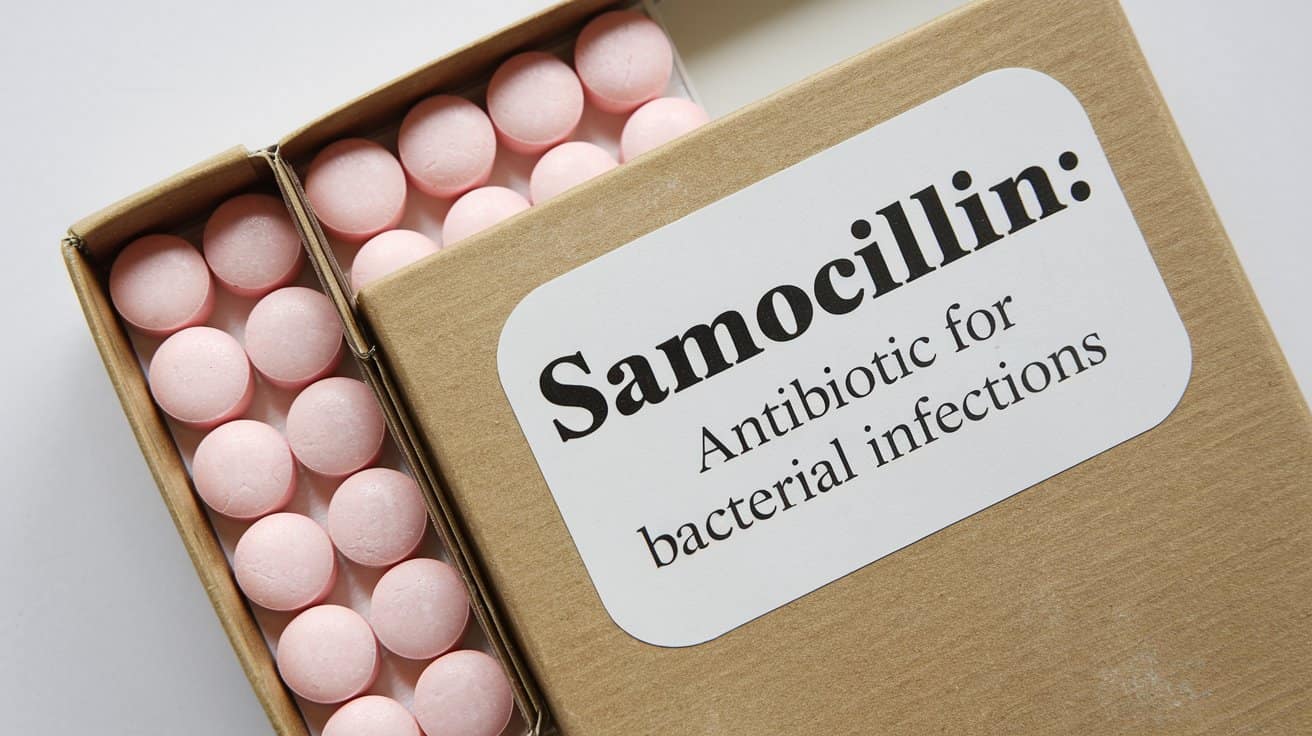Antibiotics play a critical role in modern medicine, helping combat bacterial infections and keeping us healthy. Among these life-saving drugs, a new contender is emerging—Samocillin. While it shares similarities with more familiar antibiotics, such as amoxicillin, its unique properties and broader range of uses make it a notable subject for discussion.
This article delves into everything you need to know about Samocillin, from its origins to its benefits, uses, and potential risks.
What Is Samocillin?
Samocillin traces its name to the Latin word meaning “little brush,” which reflects its potential to “sweep away” harmful bacteria from the body. A modern derivative in the family of penicillin-like antibiotics, Samocillin acts to inhibit bacterial growth, making it a useful treatment for various infections.
Origins Of The Term Samocillin:
Although Samocillin is new to the pharmaceutical market, its origins can be traced back to the same family of antibiotics that includes well-known treatments like amoxicillin. These antibiotics work by targeting bacterial cell walls, preventing growth and replication.
How Samocillin Works – A New Mechanism For Bacterial Control!
Samocillin operates similarly to penicillin-class antibiotics by interfering with the synthesis of bacterial cell walls. This prevents bacteria from multiplying, giving the body’s immune system time to destroy the infection. However, Samocillin is believed to target a wider range of bacteria, including some strains that are resistant to traditional antibiotics.
Samocillin And Bacterial Resistance
Bacterial resistance to antibiotics has been a growing concern globally. Misuse and overuse of antibiotics contribute significantly to this problem. Samocillin, due to its advanced formulation, shows promise in combating resistant strains of bacteria, but it must still be used responsibly. This makes it an important part of the next-generation antibiotics aimed at reducing the rise of superbugs.
What Are The Common Uses Of Samocillin?
Just like amoxicillin, Samocillin is effective against a variety of bacterial infections. The following are some common conditions it can treat:
Respiratory Infections
Samocillin is used to treat bacterial pneumonia, bronchitis, and other respiratory infections. It fights off the bacteria that cause inflammation in the lungs and airways, helping patients breathe more easily.
Ear, Nose, and Throat Infections
Samocillin is particularly effective in treating bacterial infections of the middle ear, sinusitis, and throat infections such as strep throat.
Urinary Tract Infections (UTIs)
UTIs are another common target for Samocillin. The medication works by clearing out bacterial colonies in the urinary tract, providing relief from symptoms and preventing recurrence.
Skin and Soft Tissue Infections
Many skin conditions, including cellulitis, are caused by bacterial infections. Samocillin can target the responsible bacteria, reducing inflammation and aiding in the healing process.
Samocillin Vs. Traditional Antibiotics – What Sets It Apart?
While antibiotics like amoxicillin and penicillin are widely used, they are losing efficacy in some cases due to rising bacterial resistance.
Samocillin, with its broader range and innovative mechanism, is designed to address bacteria that may not respond to older antibiotics. Its formula also allows it to act faster and in lower doses.
Potential Side Effects of Samocillin
As with any medication, Samocillin can cause side effects, although they tend to be mild in most cases. Common side effects include:
- Nausea
- Diarrhea
- Skin rashes
- Headaches
Serious Side Effects to Watch For
In rare instances, Samocillin may cause more serious side effects, such as severe allergic reactions (anaphylaxis), liver problems, or a dangerous type of diarrhea known as Clostridium difficile-associated diarrhea (CDAD). If these symptoms appear, it is crucial to seek medical help immediately.
Precautions and Interactions
Samocillin may interact with other medications and health conditions, which can increase the risk of side effects or reduce its efficacy.
Who Should Avoid Samocillin?
Patients with a history of allergic reactions to penicillin-based drugs should avoid using Samocillin. Additionally, those with liver or kidney conditions may need a dosage adjustment or alternative treatments.
Drug Interactions
Samocillin can interact with a variety of other medications, including blood thinners, birth control pills, and other antibiotics. Always inform your doctor about any medications or supplements you are taking before starting treatment with Samocillin.
Samocillin and Antibiotic Stewardship
Antibiotic stewardship refers to the careful use of antibiotics to avoid unnecessary prescriptions and reduce bacterial resistance. Samocillin should be taken only when prescribed, and for the full duration of the treatment, even if symptoms improve.
Why Responsible Use Of Samocillin Is Critical?
Improper or unnecessary use of Samocillin can lead to antibiotic resistance, reducing its effectiveness over time.
Patients should avoid pressuring their doctors for antibiotics when dealing with viral infections like the flu or common cold, as these conditions do not respond to antibiotics.
The Future Of Samocillin – A Promising Development!
As bacteria evolve and resistance continues to rise, new antibiotics like Samocillin are essential to keeping pace with these changes. Ongoing research is focused on how Samocillin and other next-generation antibiotics can help in the fight against drug-resistant infections.
Potential for Broader Applications
Current clinical trials are exploring whether Samocillin can be used to treat more severe infections and whether its formulation can be improved to minimize side effects further.
There’s hope that it could eventually become a first-line treatment for bacterial infections that are harder to manage with traditional antibiotics.
Closing Remarks:
Samocillin represents a significant step forward in the treatment of bacterial infections, especially as concerns about antibiotic resistance grow. Its broad-spectrum action and the ability to tackle resistant strains make it a key player in the future of antibiotic therapies.
However, with this power comes the responsibility to use Samocillin wisely, ensuring its continued effectiveness for years to come.
FAQs:
1. What Is Samocillin Used For?
Samocillin is an antibiotic used to treat bacterial infections, including respiratory infections, urinary tract infections, ear infections, skin infections, and more.
2. Is Samocillin Different From Amoxicillin?
Yes. While both belong to the penicillin family of antibiotics, Samocillin has a broader spectrum and is designed to combat more resistant strains of bacteria.
3. Can Samocillin Be Used To Treat Viral Infections Like The Flu?
No. Samocillin is ineffective against viral infections such as the flu or common cold. It should only be used to treat bacterial infections.
4. What Are The Side Effects Of Samocillin?
Common side effects include nausea, diarrhea, headaches, and rashes. Serious side effects are rare but can include allergic reactions and liver issues.
5. Is It Safe To Take Samocillin With Other Medications?
Samocillin can interact with certain medications, such as blood thinners and birth control pills. Always consult your doctor before combining Samocillin with other treatments.
6. Can I Take Samocillin If I’m Allergic To Penicillin?
No. Individuals allergic to penicillin should avoid taking Samocillin as it may trigger similar allergic reactions.
7. How Should I Take Samocillin?
Samocillin should be taken exactly as prescribed by your doctor. Do not skip doses, and always complete the full course of treatment.
8. What Happens If I Miss A Dose?
If you miss a dose of Samocillin, take it as soon as you remember. If it’s close to your next scheduled dose, skip the missed dose and continue with your regular schedule.
9. How Long Does It Take For Samocillin To Work?
Most patients begin to feel relief within 48 to 72 hours of starting treatment, but it’s important to complete the full course to ensure the infection is fully eradicated.
10. Can Samocillin Be Used For Children?
Yes, Samocillin is generally safe for children, but the dosage will vary based on their age and weight. Always follow the doctor’s instructions for pediatric use.




